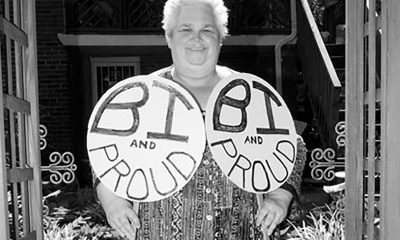Movies
Holiday film guide 2017
Another ‘Star Wars’ installment, ‘Greatest Showman’ among seasonal highlights
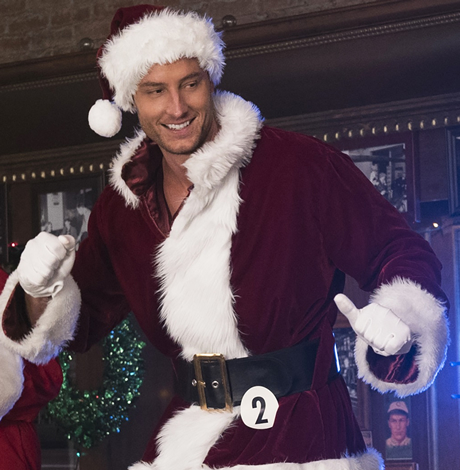
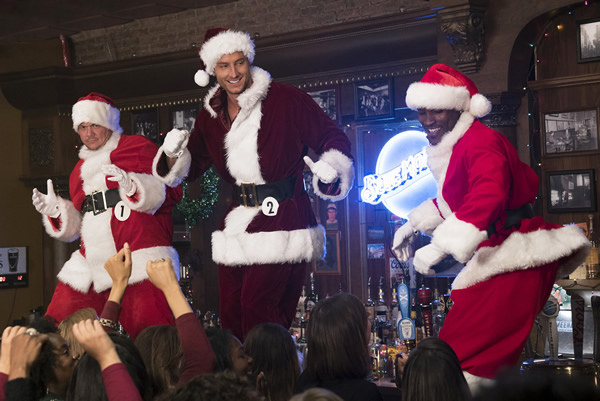
Justin Hartley as a Santa stripper in ‘A Bad Moms Christmas.’ (Photo courtesy STX)
When it’s time to take a break from the hustle and bustle of the holiday season, head to the movies. There will be some great releases waiting for you.
With the sexual harassment scandal still rocking Hollywood, this year’s holiday film schedule has even more moving pieces than usual. Be sure to confirm times and dates before heading to the theater.
For example, the movie “I Love You, Daddy,” directed by Louis C.K., was pulled from distribution hours before its release. The prestige film “The Current Wars,” starring Benedict Cumberbatch as Thomas Edison and Michael Shannon as George Westinghouse, has had its release postponed until things settle down over at the Weinstein Company. And director Ridley Scott is removing actor Kevin Spacey from “All the Money in the World” and digitally replacing him with Christopher Plummer. The movie is still scheduled to be released on Dec. 22; Plummer’s name has already replaced Spacey’s on the grisly poster.
Some of fall’s great releases are still lingering on area screens. If you’re lucky, you can still catch the queer indies “My Friend Dahmer” about the high school experiences of serial killer Jeffrey Dahmer and “BPM” the dazzling film about the early days of ACT UP Paris. “Lady Bird,” the outstanding directoral debut of Greta Gerwig, also includes a gay twist, but it’s a plot spoiler.
The magnificent “Mudbound” is premiering both on Netflix and in theaters. Under the leadership of the openly lesbian director Dee Rees (“Pariah” and “Bessie”), the film takes a close look at race and class in rural Mississippi after World War II. Frances McDormand’s amazing performance as a grieving mother anchors the excellent “Three Billboards Outside Ebbing, Missouri,” and Willem Dafoe is the solid center of “The Florida Project” by Sean Baker (“Tangerine”).
“Thor” and the members of “The Justice League” will still be saving cinemas until the New Year, and the “Bad Moms” will be trying to reclaim Christmas from their overpowering mothers until the sequel is released. “A Bad Moms Christmas” features Justin Hartley (“This Is Us”), who was the highlight of the film’s outrageous restricted trailer and who helps fine tune the amazing balance between comedy, sentiment and raunch.
The flurry of holiday releases starts with “The Man Who Invented Christmas” (Nov. 22). Directed by Bhahat Nalluri, the movie stars Dan Stevens (“Downton Abbey”) as Charles Dickens. Also opening Thanksgiving week is Pixar’s “Coco,” a stunning animated tale inspired by the Mexican holiday commemorating the dead.
Reel Affirmations will commemorate Worlds AIDS Day (Dec. 1) with a screening of “After Louie.” Directed by Vincent Gagliostro, the movie stars Alan Cumming as an artist and activist coming to terms with the toll that AIDS has taken on his life and his community. The deeply-moving film also features performances by the legendary Everett Quinton, Wilson Cruz and David Drake (“The Night Larry Kramer Kissed Me).
Other queer movies opening in December include the extraordinary “Thelma” (Dec. 1) about a young student who discovers the power of love as she explores her sexuality and discovers her own superpowers; “Tom of Finland” (Dec. 8), about the legendary gay illustrator; and the highly anticipated “Call Me By Your Name” (Dec. 15).
Impatient fans can also see “Tom of Finland” from Nov. 24-30 with the Maryland Film Festival at the inventively restored SNF Parkway. For more information on this and other great programming, go to mdfilmfest.com.
Surprisingly, one of the queerest releases of 2017 may be Guillermo del Toro’s “The Shape of Water” (Dec. 8). Inspired by the paranoid monster movies of the Cold War era, the visual masterpiece tells the story of a brave gang of outsiders who band together to save an aquatic creature who is being tortured in a government research lab. Sally Hawkins stars as Elisa Esposito, a mute who communicates through sign language and dance. Richard Jenkins is Giles, her gay next-door neighbor. The cast of this beautiful adult fairy tale is rounded out by Octavia Spencer, Michael Sheen and Michael Stuhlbarg.
Other December openings include James Franco as “The Disaster Artist” (Dec. 1), the animated feature “Ferdinand” with John Cena providing the voice of the gentle bull, Woody Allen’s “Wonder Wheel” (Dec. 8) featuring Justin Timberlake, and “The Post” (Dec. 22) starring Meryl Streep and Tom Hanks as the publisher and editor of the venerable D.C. newspaper.
As always, AFI Silver in downtown Silver Spring is ready to celebrate the holidays with style and humor. There are seasonal classics like “Meet Me in St. Louis,” “It’s A Wonderful Life” and “Miracle on 34th Street.” There’s “The Bishop’s Wife” with David Niven, Loretta Young and Cary Grant and “The Preacher’s Wife” with Denzel Washington and Whitney Houston. There’s “A Muppet Christmas Carol” with Michael Caine and Kermit the Frog, as well as the classic 1951 version of the story with Alastair Sis. Finally, the annual AFI holiday screening of “Die Hard.”
With a more continental flair, AFI is also dedicating December to its annual European Union Film Showcase. This year’s offerings include “The Workshop” with a script by Robin Campillo (“BPM”); Vanessa Redgrave’s directoral debut “Sea Sorrow” and “The Young Karl Marx,” written and directed by Raoul Peck (“I Am Not Your Negro”). For more information on these and other fine films, go to afi.com/silver.
Finally, the two big holiday blockbusters will appear. “Star Wars: The Last Jedi” lands in DC theaters on Dec. 15. The eighth film in the multi-generational space opera brings back Daisy Ridley (Rey), John Boyega (Finn), Oscar Isaac (Poe) and Adam Driver (Kylo Ren), along with the Wookie, the droids and the old warriors Luke (Mark Hamill) and Leia (Carrie Fisher, who died shortly after filming was wrapped). There’s no official word yet on whether or not Poe and Finn will finally get to consummate their relationship in Episode Nine.
“The Greatest Showman” arrives in D.C. on Dec. 22. Hugh Jackman plays showman and politician Phineas Taylor Barnum and sings songs by Benj Pasek and Justin Paul. The high-flying cast also includes Michelle Williams, Zac Efron, Zendaya and Rebecca Ferguson.
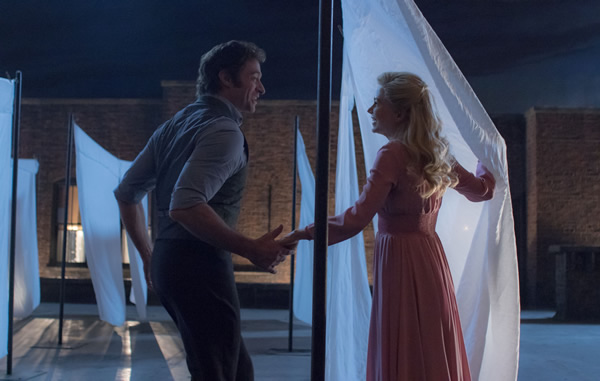
Hugh Jackman and Michelle Williams in ‘The Greatest Showman,’ one of this holiday season’s hotly anticipated releases. (Photo courtesy 20th Century Fox)
Movies
Theater classic gets sapphic twist in provocative ‘Hedda’
A Black, queer portrayal of thwarted female empowerment
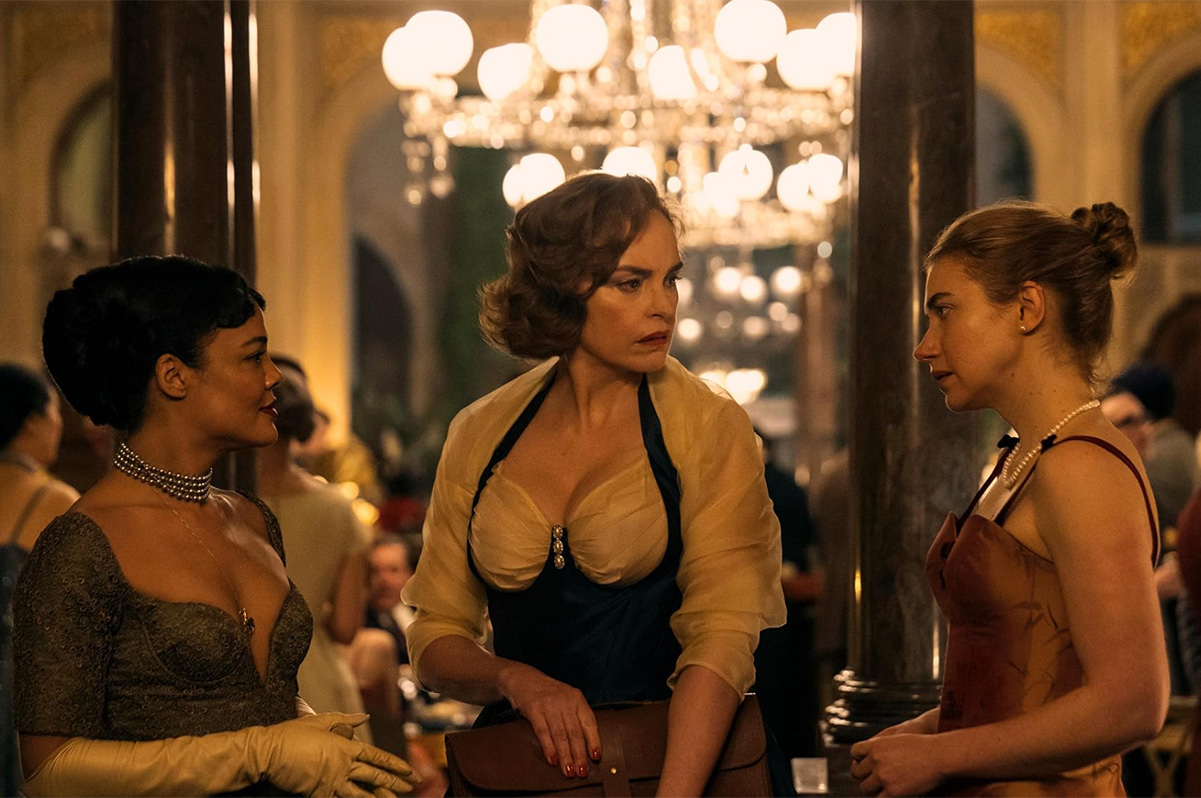
It’s not strictly necessary to know anything about Henrik Ibsen when you watch “Hedda” – the festival-acclaimed period drama from filmmaker Nia DaCosta, now streaming on Amazon Prime Video after a brief theatrical release in October – but it might help.
One of three playwrights – alongside Anton Chekhov and August Strindberg – widely cited as “fathers of “modern theater,” the Norwegian Ibsen was sharply influenced by the then-revolutionary science of of psychology. His works were driven by human motivations rather than the workings of fate, and while some of the theories that inspired them may now be outdated, the complexity of his character-driven dramas can be newly interpreted through any lens – which is why he is second only to Shakespeare as the most-frequently performed dramatist in the world.
Arguably his most renowned play, “Hedda Gabler” provides the basis for DaCosta’s movie. The tale of a young newlywed – the daughter of a prominent general, accustomed to a life of luxury and pleasure – who feels trapped as the newly wedded wife of George Tesman, a respected-but-financially-insecure academic, and stirs chaos in an attempt to secure a future she doesn’t really want. Groundbreaking when it premiered in 1891, it became one of the classic “standards” of modern theater, with its title role coveted and famously interpreted by a long list of the 20th century’s greatest female actors – and yes, it’s been adapted for the screen multiple times.
The latest version – DaCosta’s radically reimagined reframing, which moves the drama’s setting from late-19th-century Scandinavia to England of the 1950s – keeps all of the pent-up frustration of its title character, a being of exceptional intelligence and unconventional morality, but adds a few extra layers of repressed “otherness” that give the Ibsen classic a fresh twist for audiences experiencing it more than a century later.
Casting Black, openly queer performer Tessa Thompson in the iconic title role, DaCosta’s film needs go no further to introduce new levels of relevance to a character that is regarded as one of the theater’s most searing portrayals of thwarted female empowerment – but by flipping the gender of another important character, a former lover who is now the chief competition for a job that George (Tom Bateman) is counting on obtaining, it does so anyway.
Instead of the play’s Eilert Lövborg, George’s former colleague and current competition for lucrative employment, “Hedda” gives us Eileen (Nina Hoss), instead, who carries a deep and still potent sexual history – underscored to an almost comical level by the ostentationally buxom boldness of her costume design – which presents a lot of options for exploitation in Hedda’s quest for self-preservation; these are even further expanded by the presence of Thea (Imogen Poots), another of Hedda’s former flings who has now become enmeshed with Eileen, placing a volatile sapphic triangle in the middle of an already delicate situation.
Finally, compounding the urgency of the story’s precarious social politics, DaCosta compresses the play’s action into a single evening, the night of Hedda and George’s homecoming party – in the new and expensive country house they cannot afford – as they return from their honeymoon. There, surrounded by and immersed in an environment where bourgeois convention and amoral debauchery exist in a precarious but socially-sanctioned balance, Hedda plots a course which may ultimately be more about exacting revenge on the circumstances of a life that has made her a prisoner as it is about protecting her husband’s professional prospects.
Sumptuously realized into a glowing and nostalgic pageant of bad behavior in the upper-middle-class, “Hedda” scores big by abandoning Ibsen’s original 19th-century setting in favor of a more recognizably modern milieu in which “color-blind” casting and the queering of key relationships feel less implausible than they might in a more faithful rendering. Thompson’s searingly nihilistic performance – her Hedda is no dutiful social climber trying to preserve a comfortable life, but an actively rebellious presence sowing karmic retribution in a culture of hypocrisy, avarice, and misogyny – recasts this proto-feminist character in such a way that her willingness to burn down the world feels not only authentic, but inevitable. Tired of being told she must comply and cooperate, she instead sets out to settle scores and shift the balance of power in her favor, and if her tactics are ruthless and seemingly devoid of feminine compassion, it’s only because any such sentimentality has long been eliminated from her worldview. Valued for her proximity to power and status rather than her actual possession of those qualities, in DaCosta’s vision of her story she seems to willingly deploy her position as a means to rebel against a status quo that keeps her forever restricted from the self-realized autonomy she might otherwise deserve, and thanks to the tantalizingly cold fire Thompson brings to the role, we are hard-pressed not to root for her, even when her tactics feel unnecessarily cruel.
As for the imposition of queerness effected by making Eilert into Eileen, or the additional layers of implication inevitably created by this Hedda’s Blackness, these elements serve to underscore a theme that lies at the heart of Ibsen’s play, in which the only path to prosperity and social acceptance lies in strict conformity to social norms; while Hedda’s race and unapologetic bisexuality feel largely accepted in the private environment of a party among friends, we cannot help but recognize them as impediments to surviving and thriving in the society by which she is constrained, and it makes the slow-bubbling desperation of her destructive character arc into a tragedy with a personal ring for anyone who has ever felt like an outsider in their own inner circle, simply by virtue of who they are.
Does it add anything of value to Ibsen’s iconic work? Perhaps not, though the material is certainly rendered more expansive in scope and implication by the inclusion of race and sexuality to the already-stacked deck of class hierarchy that lies at the heart of the play; there are times when these elements feel like an imposition, a “what-if?” alternate narrative that doesn’t quite gel with the world it portrays and ultimately seems irrelevant in the way it all plays out – though DaCosta’s ending does offer a sliver of redemptive hope that Ibsen denies his Hedda. Still, her retooling of this seminal masterwork does not diminish its greatness, and it allows for a much-needed spirit of inclusion which deepens its message for a diverse modern audience.
Anchored by Thompson’s ferocious performance, and the electricity she shares with co-star Hoss, “Hedda” makes for a smart, solid, and provocative riff on a classic cornerstone of modern dramatic storytelling; enriched by a sumptuous scenic design and rich cinematography by Sean Bobbitt, it may occasionally feel more like a Shonda Rhimes-produced tale of sensationalized scandal and “mean-girl” melodrama than a timeless masterwork of World Theatre, but in the end, it delivers a powerful echo of Ibsen’s classic that expands to accommodate a whole century’s worth of additional yearning.
Besides, how often do we get to see a story of blatant lesbian attraction played out with such eager abandon in a relatively mainstream movie? Answer: not often enough, and that’s plenty reason for us to embrace this queered-up reinvention of a classic with open arms.
Movies
In solid ‘Nuremberg,’ the Nazis are still the bad guys
A condemnation of fascist mentality that permits extremist ideologies to take power
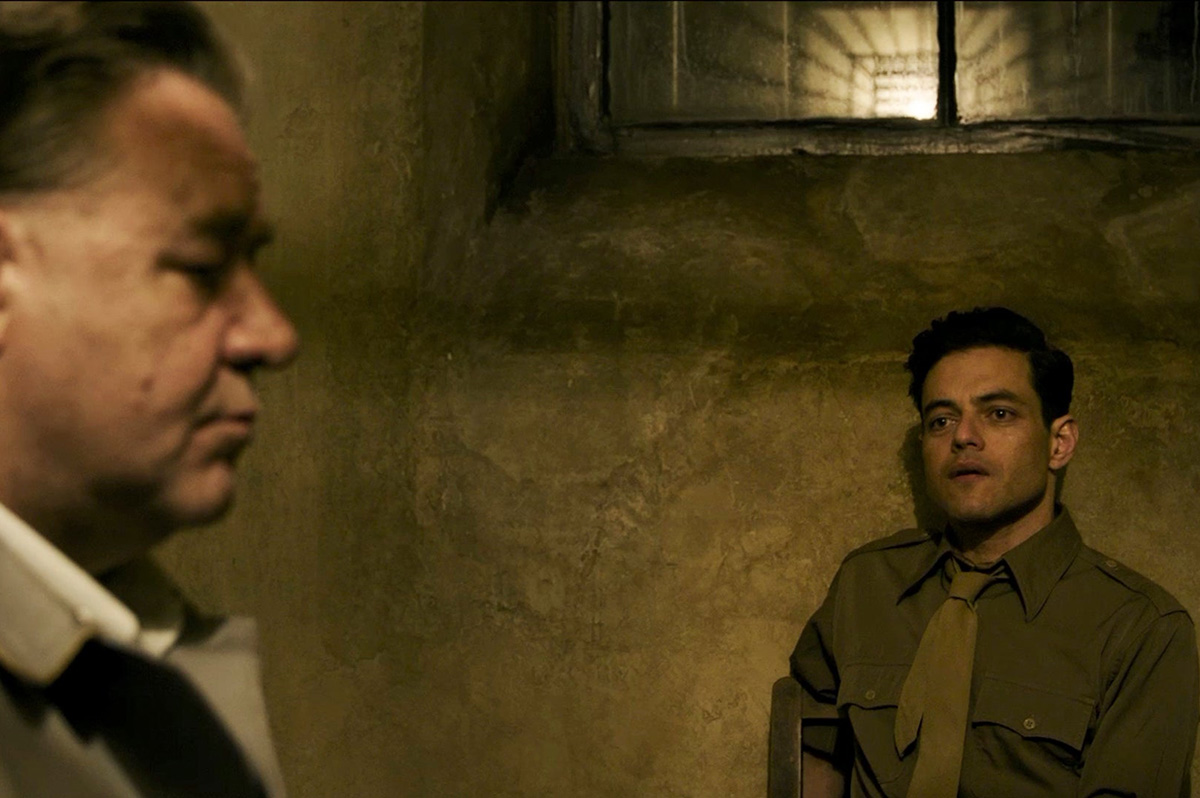
In any year prior to this one, there would be nothing controversial about “Nuremberg.”
In fact, writer/director James Vanderbilt’s historical drama – based on a book by Jack El-Hai about the relationship between Nazi second-in-command Hermann Göring and the American psychiatrist who was tasked with studying him ahead of the 1945 international war crimes trial in the titular German city – would likely seem like a safely middle-of-the-road bet for a studio “prestige” project, a glossy and sharply emotional crowd-pleaser designed to attract awards while also reinforcing the kind of American values that almost everyone can reasonably agree upon.
This, however, is 2025. We no longer live in a culture where condemning an explicitly racist and inherently cruel authoritarian ideology feels like something we can all agree upon, and the tension that arises from that topsy-turvy realization (can we still call Nazis “bad?”) not only lends it an air of radical defiance, but gives it a sense of timely urgency – even though the true story it tells took place 80 years ago.
Constructed as an ensemble narrative, it intertwines the stories of multiple characters as it follows the behind-the-scenes efforts to bring the surviving leadership of Hitler’s fallen “Third Reich” to justice in the wake of World War II, including U.S. Supreme Court Justice Robert Jackson (Michael Shannon), who is assigned to spearhead the trials despite a lack of established precedent for enforcing international law. Its central focus, however, lands on Douglas Kelley (Rami Malek), a psychiatrist working with the Military Intelligence Corps who is assigned to study the former Nazi leadership – especially Göring (Russell Crowe), Hitler’s right-hand man and the top surviving officer of the defeated regime – and assess their competency to stand trial during the early stages of the Nuremberg hearings.
Aided by his translator, Sgt. Howie Triest (Leo Woodall), who also serves as his sounding board and companion, Kelley establishes a relationship with the highly intelligent and deeply arrogant Göring, hoping to gain insight into the Nazi mindset that might help prevent the atrocities perpetrated by him and his fellow defendants from ever happening again, yet entering into a treacherous game of psychological cat-and-mouse that threatens to compromise his position and potentially undermine the trial’s already-shaky chances for success.
For those who are already familiar with the history and outcome of the Nuremberg trials, there won’t be much in the way of suspense; most of us born in the generations after WWII, however, are probably not. They were a radical notion at the time, a daring effort to impose accountability at an international level upon world leaders who would violate human rights and commit atrocities for the sake of power, profit, and control. They were widely viewed with mistrust, seen by many as an opportunity for the surviving Nazi establishment to turn the fickle tides of world opinion by painting themselves as the victims of persecution. There was an undeniable desire for closure involved; the world wanted to put the tragedy – a multinational war that ended more human lives than any other conflict in history before it – in the rear-view mirror, and a rush to embrace a comforting fantasy of global unity that had already begun to disintegrate into a “cold war” that would last for decades. “Nuremberg” captures that tenuous sense of make-it-or-break-it uncertainty, giving us a portrait of the tribunal’s major players as flawed, overburdened, and far from united in their individual national agendas. These trials were an experiment in global justice, and they set the stage for a half-century’s worth of international cooperation, even if it was permeated by a deep sense of mistrust, all around.
Yet despite the political and personal undercurrents that run beneath its story, Vanderbilt’s movie holds tight to a higher imperative. Judge Jackson may have ambitions to become Chief Justice of SCOTUS, but his commitment to opposing authoritarian atrocity supersedes all other considerations; and while Kelley’s own ego may cloud his judgment in his dealings with Göring, his endgame of tripping up the Nazi Reichsmarschall never wavers. In the end, “Nuremberg” remains unequivocal in its goal – to fight against institutionalized racism, fetishized nationalism, and the amoral cruelty of a power-hungry autocrat.
Yes, it’s a “feel-good” movie for the times (if such a term can be used for a movie that includes harrowing real-life footage of Holocaust atrocities), a reinforcement of what now feels like an uncomfortably old-fashioned set of basic values in the face of a clear and present danger; mounted with all the high-dollar immersive “feels” that Hollywood can provide, it offers up a period piece which comments by mere implication on the tides of current-day history-in-the-making, and evokes an old spirit of American humanism as it wrangles with the complexities of politics, ethics, and justice that endure unabated today. At the same time, it reminds us that justice is shaped by power, and that it’s never a sure bet that it will prevail.
Yet while it’s every inch the well-produced, slick slice of Hollywood-style history, “Nuremberg” doesn’t deliver the kind of definitive closure we might long for in our troubled times. For all its classic bravado and heartfelt idealism, it can’t deliver the comforting reassurances we desire because history itself does not provide them. The trials were not an unequivocal triumph; though they may have set a precedent in bringing accountability to power on the world stage, it’s one which, eight decades later, has yet to be fully realized. Vanderbilt doesn’t try to rewrite the facts to make them more satisfying, or soften the blow of their hard lessons, and while his movie certainly feels conscious of the precarious times in which it arrives, it doesn’t try to give us the kind of wish-fulfillment ending we might long to see – which ultimately gives it a ring of bitter truth and reminds us that our world continues to suffer from the evil of corrupt men, even when they are defeated.
It’s a movie populated with outstanding performances. Crowe delivers his most impressive turn in years as the chillingly malevolent Göring, and Malek channels all his intensity into Kelley to create a powerfully relatable flawed hero for us to cheer; Shannon shines as the idealistic but practical Jackson, and Woodall provides a likable everyman solidity to counter Malek’s volatile intensity. It might feel early to talk about awards, but it will be no surprise if some of these names end up in the pool of this year’s contenders.
Is “Nuremberg” the anti-Nazi movie we need right now? It certainly seems to position itself as such, and it admittedly delivers an unequivocal condemnation of the kind of fascist, inhuman mentality that permits such extremist ideologies to take power. In the end, though, it leaves us with the awareness that any victory over such evil can only ever be a measured against the loss and tragedy that is left in its wake – and that the best victory of all is to stop it before it starts.
In 2025, that feels like small comfort – but it’s enough to make Vanderbilt’s slick historical drama a worthy slice of inspiration to propel us into the fight that faces us in 2026 and beyond.
Movies
Sydney Sweeney embodies lesbian boxer in new film ‘Christy’
Christy Martin’s life story an inspirational tale of survival
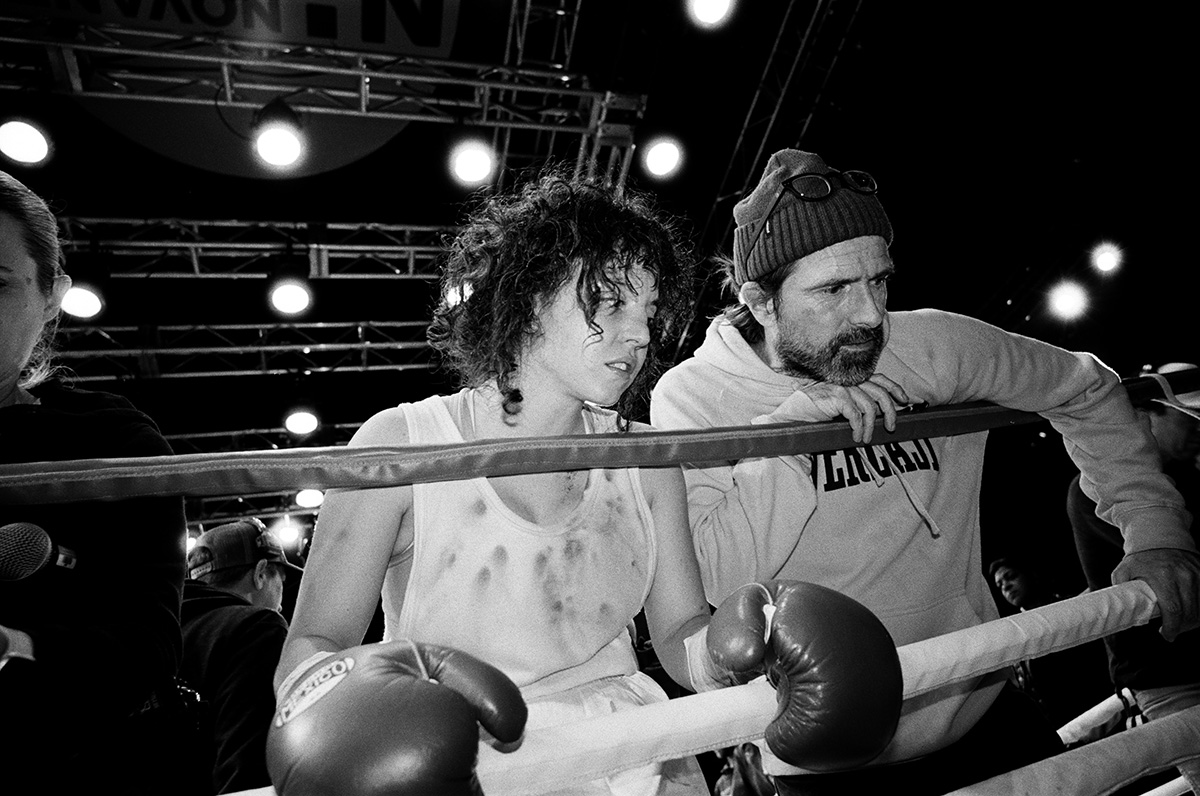
For legendary professional boxer Christy Martin, never in a million years did she expect to see the riveting story of her rapid rise to fame onscreen.
“When somebody first contacted me about turning my life into a movie, I thought they were joking,” Martin said at a recent Golden Globes press event for her movie, “Christy.”
“I was so afraid that my life would be as I call it, Hollywoodized.”
Martin was put at ease once she saw how committed co-screenwriters Mirrah Foulkes, and Australian filmmaker David Michôd were to the material, and how relentless actress Sydney Sweeney was to accurately portray her.
“Mirrah was very fair to me and treated me great on the paper … I feel like this is the most powerful group that could ever come together to tell my story,” she acknowledged.
In “Christy,” viewers see Martin’s combative spirit, in her ongoing quest to win each fight. Under her demanding coach turned manager-husband Jim Martin (played by Ben Foster), Christy is fearless in the boxing ring, yet increasingly troubled as she deals with the pressure of her mother, sexual identity issues, drugs, and a physically abusive marriage that almost ended in death.
“It’s crazy to see anybody, but especially Syd, become me,” she told the Los Angeles Blade. “It’s overwhelming! A little much for a coal miner’s daughter from a small town in southern West Virginia.”
For Sweeney, who is also a producer on the film, playing the courageous lesbian boxer has been a life-changing experience. “This is the most important character I have ever played. It’s the most important story I have ever told or will tell. It’s an immense honor to bring her to life.”
To become Martin, Sweeney worked hard to absorb as much information on her as possible.
“I had the real Christy, and then I had years and years of interviews and fight footage and her book and her documentary on Netflix that I was able to pull from. I like to build books for my characters, to create their entire life, from the day they’re born until the first time you meet them onscreen. So just kind of filling out the entire puzzle of Christy here.”
Sweeney said the many scenes where Martin’s mom couldn’t accept she was gay were immensely challenging to be a part of.
“That was probably one of the hardest scenes for me,” Sweeney noted. “I have very supportive parents, and I can’t imagine what it would be like to not have your mom or dad to turn to ask for help or guidance or just need support. So it was a very difficult scene to process.”
Equally challenging was the rigorous process Sweeney went through in order to become Martin in the movie.
“It was a huge physical transformation for me. I trained for two-and-a-half months before we even started filming, and I put on 35 pounds for the role, so it was a big transformation.”
As difficult as it was to deal with a film that dives into domestic violence, Sweeney was able to shake the character off when she was done at the end of each day.
“I have a rule for myself where I don’t allow any of my own thoughts or memories into a character. So when the moment they call ‘cut,’ I’m back to being Syd, and I leave it all in the scene, and that’s the story that I’m telling. Otherwise I’m just me; so I go home when I’m me.”
Martin hopes that audiences leave the theater with a sense of faith.
“I think we showed a path of how to get out of any situation that you might be in. And also, it’s very important to be true to you. Sometimes that takes a while — it took me a little while — but I’m happy to be true to me. And that’s what we want; the whole story is about being who you are.”
Sweeney would love viewers to walk away and demand to be “Christy Strong.”
“I hope that they want to be kind and compassionate to others around them, and be that helping hand. Christy’s story is singular, and yet her story of triumph, survival and continuation, supports those who are in experiences of domestic violence behind closed doors. She is one of the great champions.”
Sweeney loves that Martin is also a great advocate of new boxing talent. “That spark of life is something that I think at the end of the day, ‘Christy’ is about– it’s the spark to keep going and be who you are proudly.”
-

 District of Columbia1 day ago
District of Columbia1 day agoBowser announces she will not seek fourth term as mayor
-

 U.S. Military/Pentagon2 days ago
U.S. Military/Pentagon2 days agoPentagon moves to break with Boy Scouts over LGBTQ and gender inclusion
-

 Drag2 days ago
Drag2 days agoPattie Gonia calls out Hegseth’s anti-LGBTQ policies — while doing better pull-ups
-

 District of Columbia3 days ago
District of Columbia3 days agoSecond gay candidate announces run for Ward 1 D.C. Council seat





